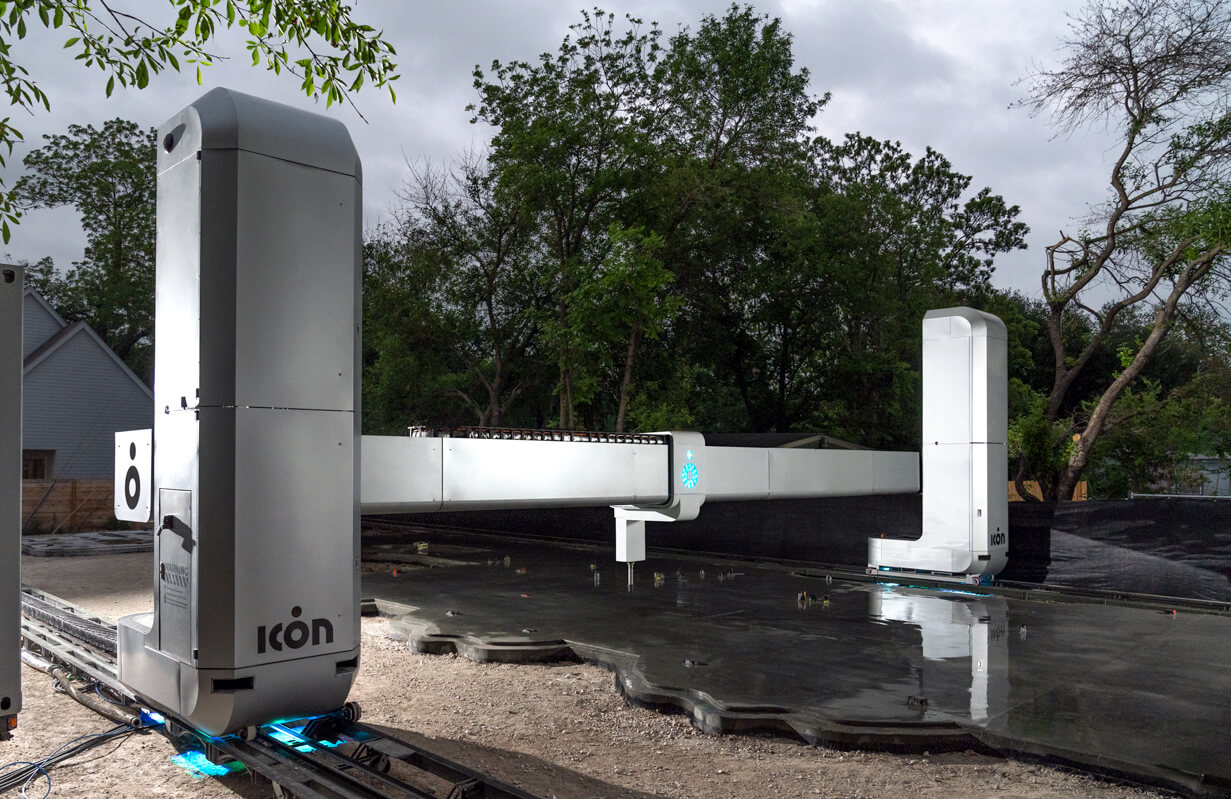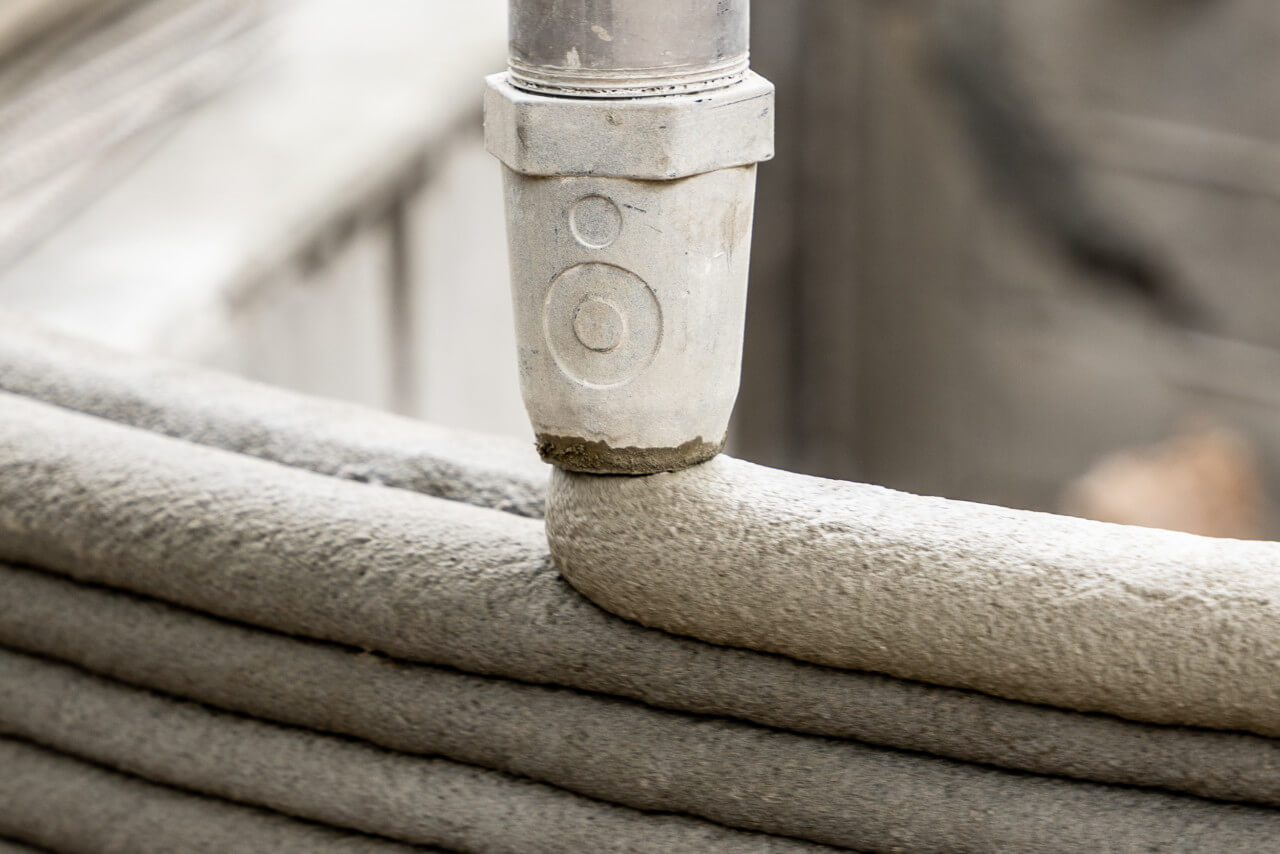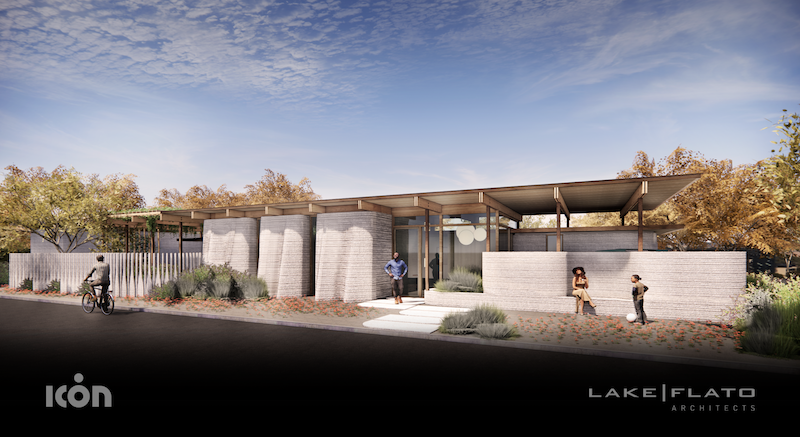ICON, the Texas-based robotics and advanced materials construction company with lunar ambitions, has announced a new series of (earthbound) 3D-printed homes designed in collaboration with a slew of top architects.
San Antonio- and Austin-based Lake|Flato Architects is the first to be tapped for the so-called Exploration Series, which according to ICON, will “develop new design languages and architectural vernaculars” with collaborating architects “based on the opportunities created by construction scale 3D printing.” Future collaborating firms for the series have yet to be announced.
Work on the inaugural 3D-printed residence, dubbed House Zero, is already underway in East Austin. It’s the same neighborhood where ICON is also behind, in partnership with real developer 3Strands and Logan Architecture, a new development populated by “mainstream” 3D-printed single-family homes. (Prior to the East Austin development, ICON’s previous habitable creations, including a low-cost housing scheme in Mexico City and a similar project in Austin dedicated to housing formerly homeless residents, were more diminutive and experimental in nature.)
A buzzy Lone Star State startup that boasts Bjarke Ingels Group as one of its A round investors, ICON has certainly garnered attention for its entry into the mainstream Austin housing market. Founded in 2017 with its first prototype home being completed in early 2018, the company has recently been profiled by TODAY and several other outlets as of late. Its pitch is an attractive one: durable, efficient, and, increasingly, non-outré residential structures that can go up in half the time at half the cost compared to traditional stick-built construction.

A 2,000-square-foot affair that blends “mid-century modernist ranch house aesthetics with the organic possibilities of additive construction,” per an ICON press release, Lake|Flato’s House Zero will feature three bedrooms, three bathrooms, and, notably, a one-bedroom accessory dwelling unit (presumably also 3D-printed) measuring 350-square-feet.
According to ICON, House Zero is unique in that it’s the first home of its kind to be expressly designed for 3D printing (although the organizers of Project Milestone in Eindhoven, The Netherlands, might disagree).
“House Zero will be the most incredible 3D-printed home in the world, because it was optimized and designed specifically to be 3D printed,” said ICON co-founder and CEO Jason Ballard in a statement. “This is the moment when people around the world will see more of the architectural design freedom and benefits of a 3D-printed house and believe that they too would want to live in a 3D-printed house.”

“House Zero has allowed Lake|Flato to develop our ethos of human and nature-centric design with an entirely new framework,” added Ashley Heeren, an associate with Lake|Flato. “It’s been a thrill for our team to design this home of the future and explore new ways to create high-performance shelter that celebrates craftsmanship, seeks increased efficiency and eliminates steps in the construction process.”
In addition to debuting House Zero and the Exploration Series, ICON has also announced the arrival of a next-generation construction system based on its patented Vulcan 3D-printing technology. Weighing 9,500 pounds, the souped-up robotic system enables the firm to print structures up to 3,000 square feet at twice the speed of previous Vulcan printers. Featuring an automated control system, the home-producing robot is operated via an ICON-developed smartphone app.
